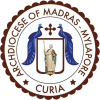Come and see
The Little Mount Shrine hosts many sacred sites—historical and modern. Parishioners and pilgrims from around the world are able to connect with the Apostolic roots of their faith when they visit us!
St. Thomas Cave
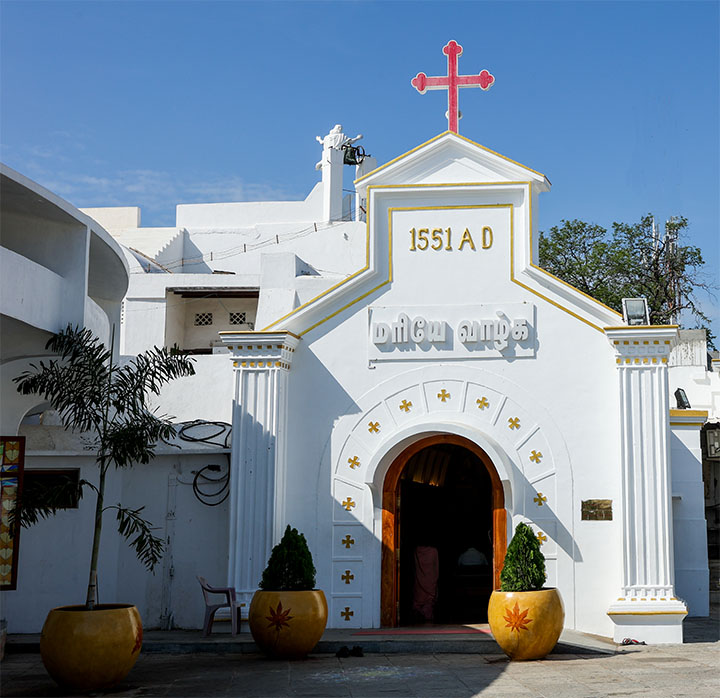
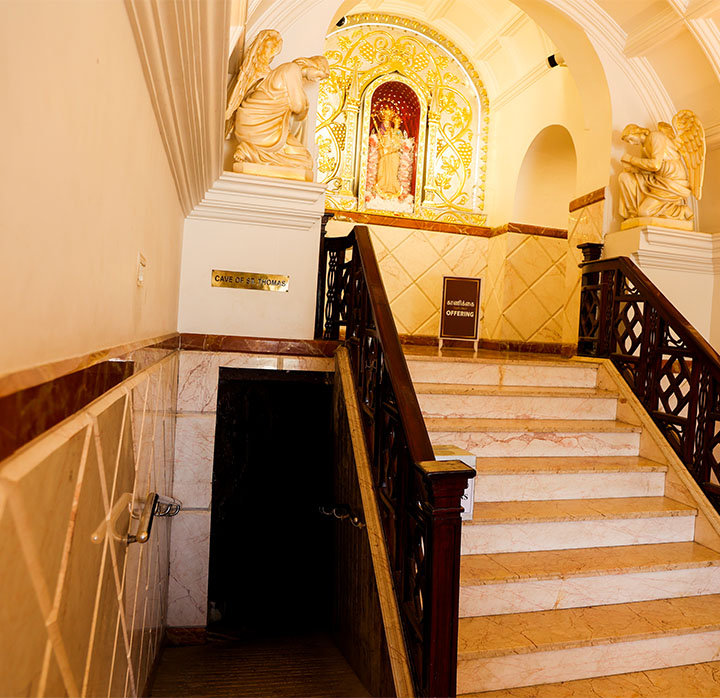
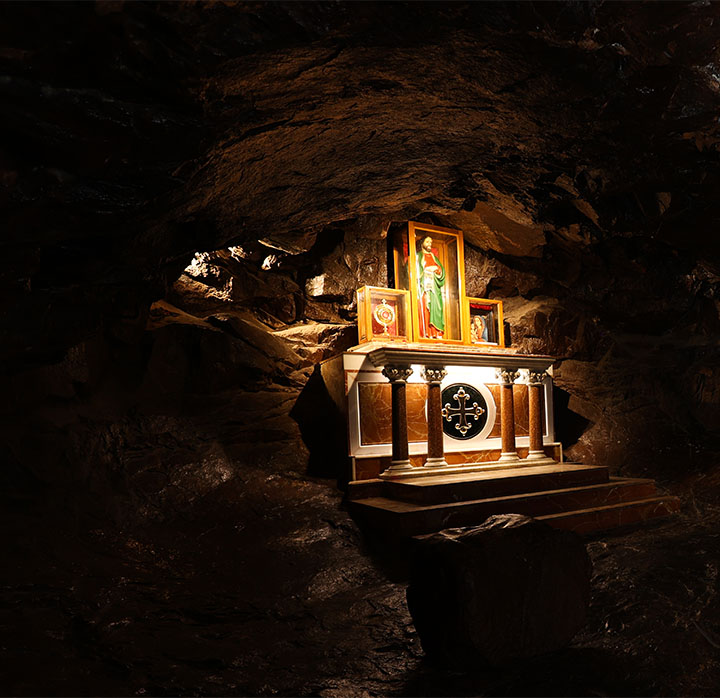
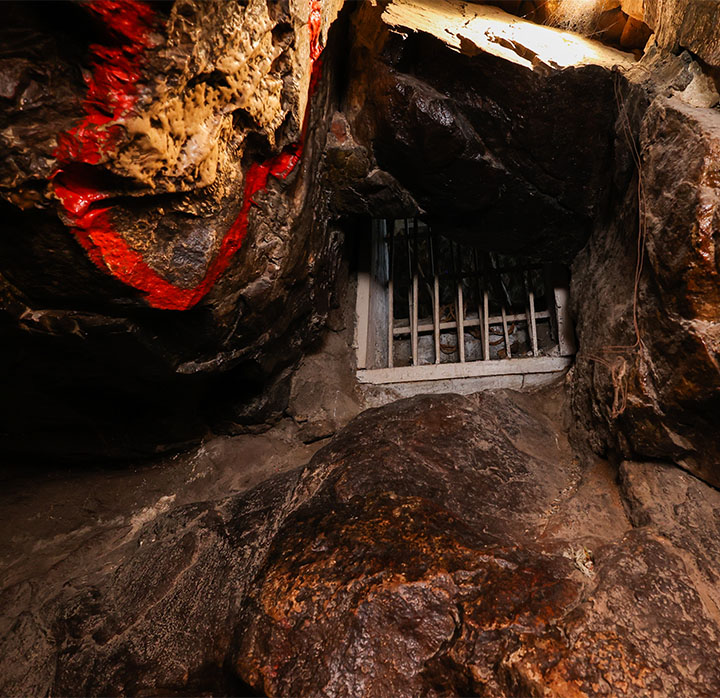
A small chapel built by the Portuguese in 1551 A.D. above the Apostle’s cave has been preserved well. Once you enter the chapel, to the left of its altar, an entrance to a naturally formed cave can be found. This cave is about 14 feet wide, 15 to 16 feet long and 7 feet tall at its highest point. At this entrance, an ancient cross carved on the rock welcomes us.
According to tradition, St. Thomas either lived in this cave or used it to hide from his persecutors. Inside the cave is a small altar on which a statue of the Apostle is installed. We can also see a small window believed to have been miraculously created by him to escape from his enemies when they attacked him.
Handprint
Near the window, a handprint is visible on the rock. It is believed to be the impression of the Saint’s hand—the same hand that had touched the wounds of Christ!
Sculpture of St. Thomas
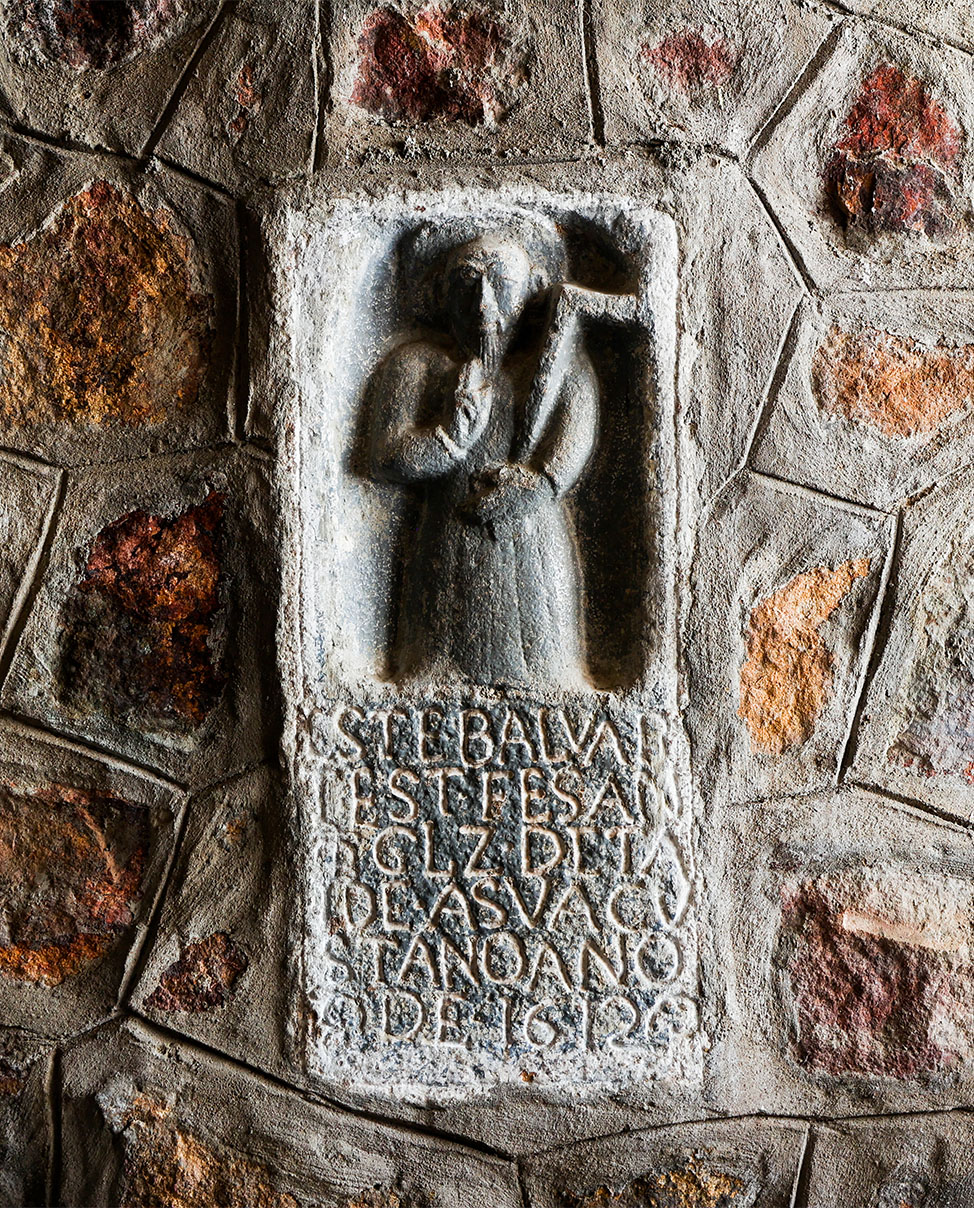
Climbing the stairs outside the old chapel at the right hand side, there is a door leading to an extension chamber above the cave. Here we find a small stone sculpture on the wall. It shows the Apostle as a haloed, bearded figure holding the Bible and a carpenter’s scale in his left hand while raising his right hand as if to bless us. According to the apocryphal ‘Acts of Thomas,’ St. Thomas came to India as a carpenter. Therefore, the sculpture has the carpenter’s scale in his hand. Below the carved stone, a Portuguese inscription reads as follows:
ESTE BALVAR
TE ST. FES AN
T GLZ DE TA
IDE A SVA CV
STA NO ANO
DE 1612
Translation: Antonio Concalvez De Taide made this bulwark of S.T. at his own cost in 1612. (S.T. refers to St. Thomas).
It is believed that this sculpture was erected in 1612 A.D. on the Fort of San Thome. When the Portuguese took possession of the town (Meliapore), they built a wall around it, raised a fort, and named it “St. Thoma.” The records of the East India Company show that many such bulwarks were constructed in San Thome by the Portuguese to protect the House of the glorious St. Thomas.
However, at the beginning of the seventeenth century, the town was raided by the Mysore troops of Hyder Ali. Much damage was done to the House of Thomas (burial place of St. Thomas) and the fort. In 1697, the British demolished the remnants of the fort after they took possession of Fort St. George. The sculpture may have been moved to Little Mount church during this time.
Bleeding Cross
Another pilgrim attraction at Little Mount is a cross chiselled on a rock. It is believed that St. Thomas offered Mass and spent long hours in prayer at this spot and shaped this cross with his own hands. In the seventeenth century, by order of Fr. Nicholas Piment S.J., a small chapel called “the Chapel of Resurrection” was constructed using this cross as the altar. This cross resembles the one at Big Mount (St. Thomas Mount).
On 18th December 1561, while celebrating Mass for the feast of Our Lady of Expectation, both these crosses began dripping blood simultaneously.
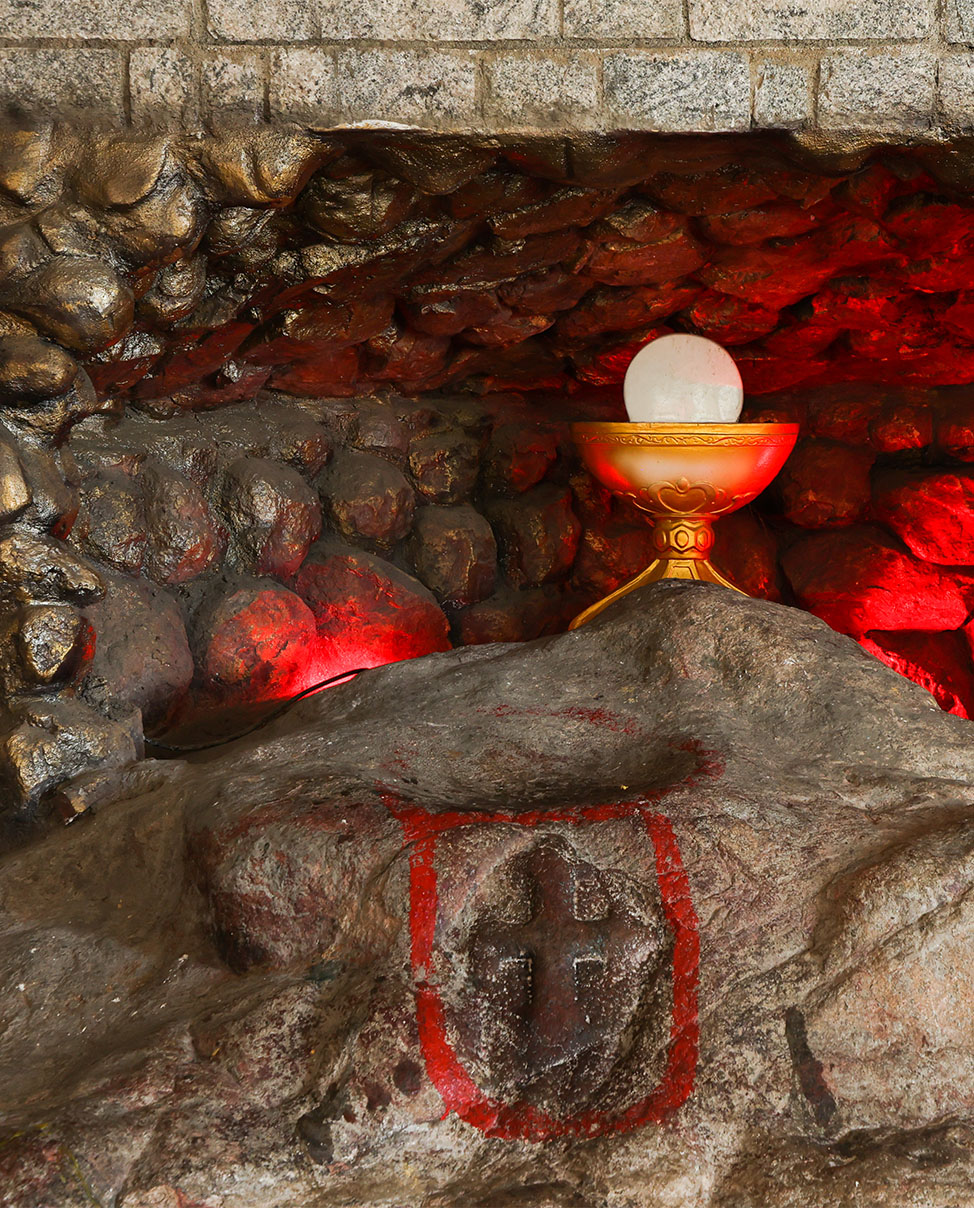
This miracle was witnessed several times between 1561–1700 A.D.! Father Silvester De Sousa, a missionary of the Society of Jesus in Malabar, provided an eyewitness account of the miracle to Father Guy Tachara, SJ, who wrote about it in 1711 A.D.
The bloodstained cross on the rock and the other stone cross at the cave’s entrance stand testimony to the sanctity of the Little Mount Shrine.

Miraculous Spring
Near the Cross on the Rock, we can find a perennial spring. It is believed that when the Apostle Thomas was preaching the Good News, he struck the rock with his stick. This spring is called St. Thomas Fountain. Instantly, a spring of clean water gushed out to quench the people’s thirst. Even today, people drink this water, believing it will heal their sicknesses through the intercession of St. Thomas.

Footprint of Apostle Thomas
On one of the boulders at the Shrine, we can see a footprint preserved remarkably well considering its vintage. Traditionally, it’s believed to be the footprint of Apostle Thomas. The impression was probably made while he was fleeing to Big Mount from his persecutors.
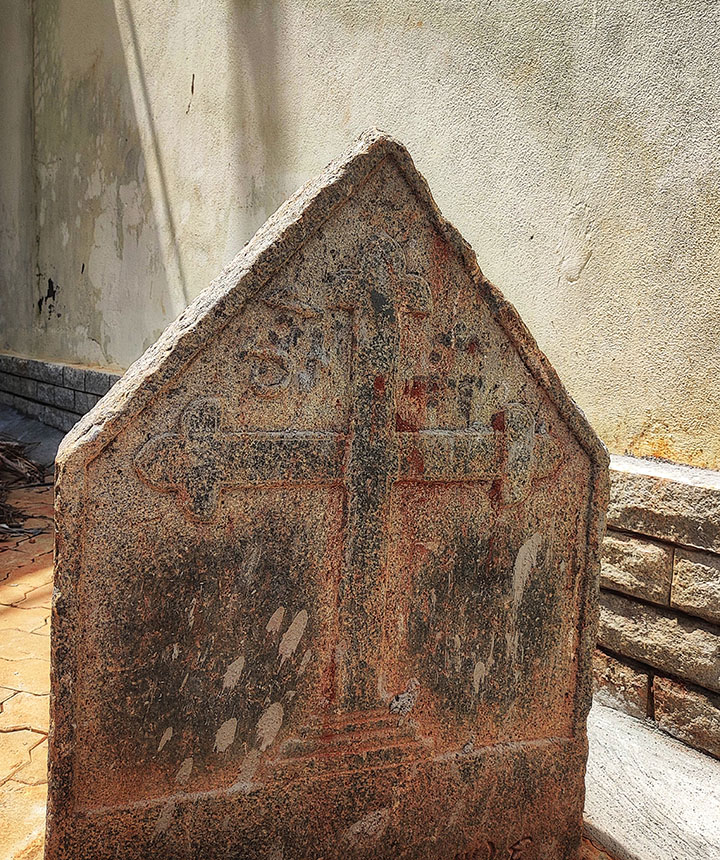
Armenian Tombstone
An Armenian tombstone is found at the foot of the long flight of steps leading up to the main entrance of the Little Mount Church. It is the oldest Armenian Tombstone in Chennai and resembles a milestone.
In 1897, when His Excellency Sir Arthur Elibank Havloc, Governor of Madras, paid a visit to this church, he was taken aback by the inscription on the tombstone. So, Dr Hultzsch, the renowned Epigraphist then with the Government of India, translated it for him. The Governor passed it on to Rev. Fr. R. M. Barretto, Chaplain of this church, on 15th November 1898. The translation of the Armenian inscription reads, “This is the tomb of Khojah (Coja) David, the son of (Coja) Margare in the year 1112”. (The year 1112 of the Armenian era corresponds to the year 1663 A.D.)
Scholars and historians believe that the said Coja David constructed the stone steps leading to the Little Mount Church at his own cost.
Pillar of Faith

The Pillar of Faith was erected on 4th May 2019 to commemorate the Archdiocesan Year of the Eucharist (2018-19).
This pillar, carved out of natural stone, testifies that Christianity in India is 2000 years old. Biblically, such pillars of faith are symbols of God-Man encounters. The Pillar of Faith was chiselled from three huge stones from the same rock to symbolise the Most Holy Trinity.
The octagonal pillar signifies the universal nature of the Gospel. At its foot, we see the following imagery:
- The Sacred Heart of Jesus, Our of Health, and Apostle St. Thomas
- The grapevine denotes our union with God.
- The Monstrance implies the Eucharist
- The Dove embodies the Holy Spirit
- The Victorious Lamb of God epitomises the risen Lord
- The overflowing, perennial harbinger of goodness (Poorna Kumbha) is an Indian symbol of the eternal self-giving of the Eucharistic Lord
At the top of the pillar, the Cross of St. Thomas reminds us of the Sacred Legacy of the Apostle.
Holy Land



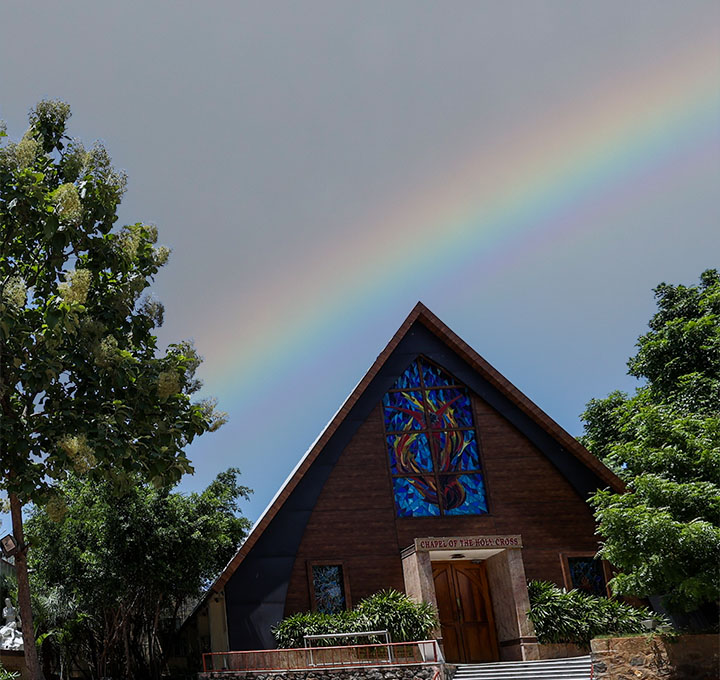
Holy Land is a sprawling tract of land behind the church building. It provides the feel of a mini amphitheatre with a raised stage at one end and the Jesus Tower at the other.
Its capacity to seat up to 2,000 people allows us to hold big events comfortably—e.g., retreats, worship concerts, Way of the Cross, etc.
Around the land, you will find statues for every Station of the Cross—drawing large crowds during the Lenten season. The 12th Station has special significance here as it is housed inside the Chapel of the Holy Cross. When observing the Way of the Cross, passing through the Chapel and witnessing the life-like imagery of the death of Christ provides worshippers with an intense experience of Calvary.

